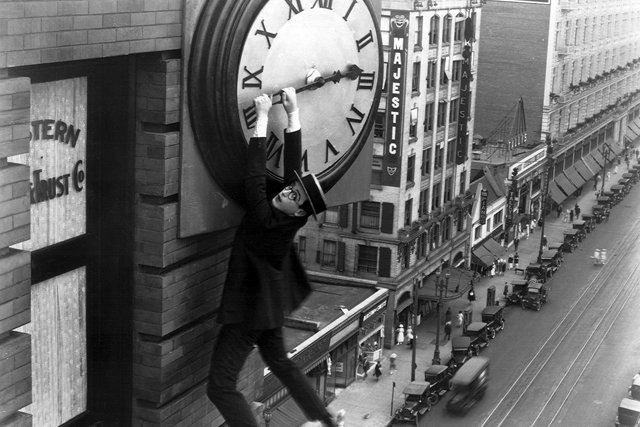
Here are some interesting facts that you may not know about Daylight Saving Time (DST):
- Ben Franklin was an early advocate of changing the clocks.
His kite experiment may have given us electricity, but this founding father was also famous for giving us something else: Time travel. The famous inventor first discussed changing the clocks in 1784 when he penned an essay titled “An Economical Project for Diminishing the Cost of Light” in The Journal of Paris. One of the rationales he suggested? Longer daylight hours would save on candle use.
- Official credit for the idea goes to a bug collector.
The first serious case for DST came from a peculiar place. While working at a post office by day, an entomologist who did most of his bug hunting at night soon became frustrated by how early the sun set during the summer months. He reasoned that springing the clocks forward would allow more daylight for bug collecting - along with other evening activities. The clocks could be switched back in the winter when people (and bugs) were less likely to be found outdoors.
- The time change was formally implemented during WWI.
DST was formally implemented during World War I in a coordinated effort to minimize coal consumption. The implementation was repealed during the peace time in between World War I and World War II. The policy was adopted again during the second war effort.
- Arizona and Hawaii do not recognize DST.
Some people just continually get off easy in life! When it comes to DST, those people are the residents of Arizona and Hawaii. Since Arizona and Hawaii don't recognize or celebrate the time change, they never have to update their microwaves, stoves or alarm clocks.
- DST happens at different times in different countries.
Not everyone changes the clock on the same date, which can make for confusing calls to friends and family in other countries. For example, Brazil already changed its clocks on the third Saturday in October. Israel usually changes the clock on the last Sunday in October (the 25th this year). That means that for a few days this month, Tel Aviv will only be six hours ahead of New York City instead of seven.
- DST starts at 2 a.m. for a reason.
DST doesn’t begin at the stroke of midnight like you might expect it to. Rather, the time change is delayed until most people (hopefully) aren’t awake to notice it. By waiting until two in the morning to give or take an hour, the idea is that most workers with early shifts will still be in bed and most bars and restaurants will already be closed.
Spring forward…Fall back… we all know the saying to help us remember to adjust our clocks for the daylight saving time changes (this Sunday in case you are wondering). But, what can we do to help workers adjust to the effects of the time change?
- Remind workers that several days after the time changes are associated with somewhat higher health and safety risks due to disturbances to circadian rhythms and sleep.
- It can take one week for the body to adjust sleep times and circadian rhythms to the time change so consider reducing demanding physical and mental tasks as much as possible that week to allow oneself time to adjust.
- Remind workers to be especially vigilant while driving, at work, and at home to protect themselves since others around them may be sleepier and at risk for making an error that can cause a vehicle crash or other accident.
- Research found men and people with existing heart disease may be at risk for a heart attack after the time change.
- Workers can improve their adaptation to the time change by using these suggestions (American Academy of Sleep Medicine, 2013). Circadian rhythms and sleep are strongly influenced by several factors including timing of exposure to light and darkness, times of eating and exercise, and time of work. One way to help the body adjust is to gradually change the times for sleep eating, and activity:
► For the Spring-time change: Starting about three days before, one can gradually move up the timing of wakening and bedtime, meals, exercise and exposure to light earlier by 15 - 20 minutes each day until these are in line with the new time. About one hour before bedtime, keep the lights dim and avoid electronic-lit screens on computers, tablets, etc. to help the body move earlier the time it is ready to wake up in the morning and go to sleep at night.
► For the Fall-time change: Starting about three days before, one can gradually move the timing of wakening and bedtime, meals, exercise and exposure to light later by 15 - 20 minutes each day until these are in line with the new time. About 1 hour after awakening in the morning, you can keep the lights dim and avoid electronic lit screens on computers, tablets, and so forth can help the body move to a later time that it is ready to wake up in the morning and go to sleep at night.
► Being sleep deprived before the time change will increase the health and safety risks so make it a priority to get enough sleep and be well rested several days before the time change.
To read more about this important information, please click here: CDC: Daylight Saving: Suggestions to help workers adapt to the time change
Don’t forget to set your clocks back 1 hour at 2 a.m. this Sunday!

Related Topics: Behavior Based Safety, Construction Safety, Did you know, Home Safety, Jobsite Safety, Safety Articles, Safety Awareness, Safety Culture, Safety Tips, Workplace Safety